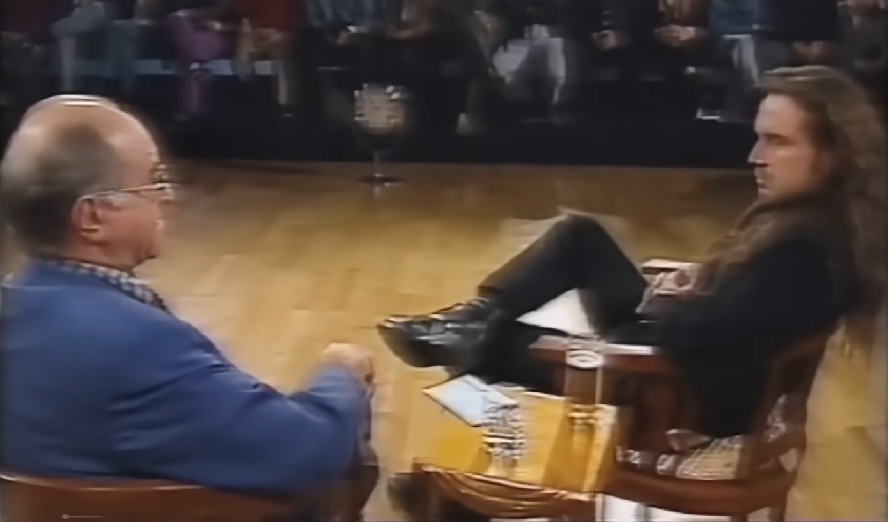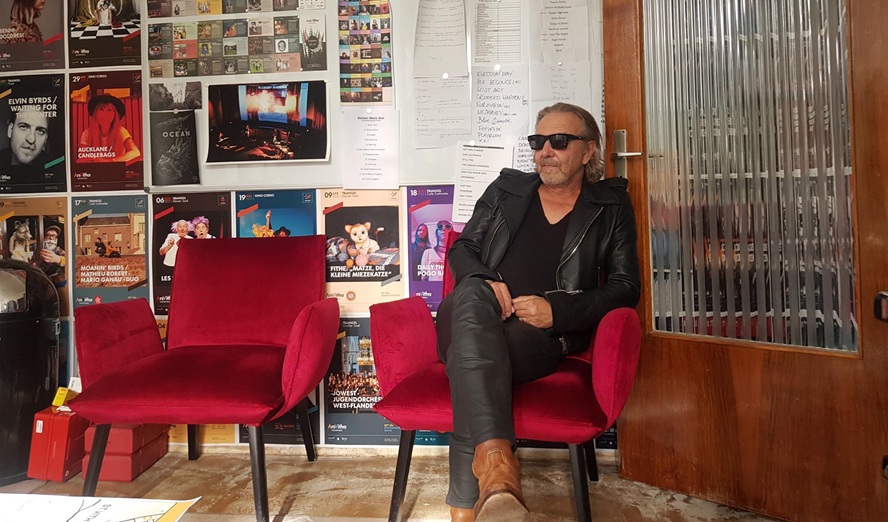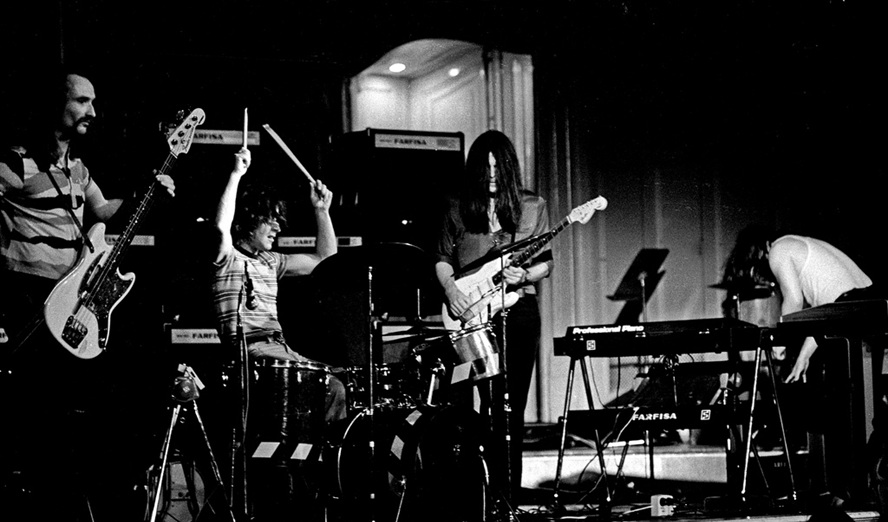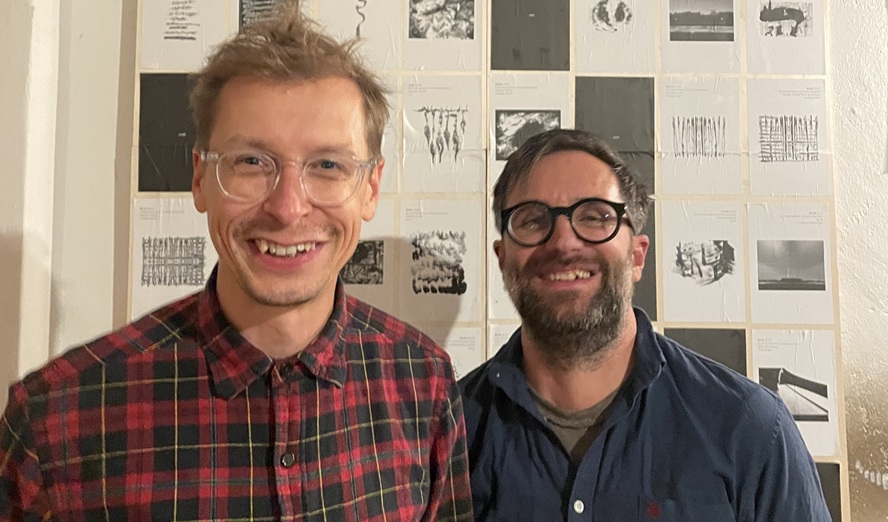In the late summer of 1996, Vienna witnessed a fundamental change in its music communities. The unprecedented electronica and dancefloor boom will probably make many promoters think three times about booking one or the other guitar band even in autumn, since audiences have been dwindling considerably. A fine festival is partly to »blame« for this development: »phonoTAKTIK«. Organized by Christof Kurzmann and Peter Rantasa the year before, it focused on Ambient Music and presented the genre\’s crème de la crème, together with Austrian acts, in unusual venues. The unexpected success encouraged the organizing duo to stage another festival half a year later. Intended as continuation of as well as counterpoint to phonoTAKTIK, »Hyperstrings – The Use of Guitars« investigated the potential of these vestiges of Rock for today\’s music. Fennesz was the only musician to play at both festivals, and both times he fit in as if he slipped into a custom-made Japanese suit.
Musical History
Christian Fennesz was born in the province of Burgenland but has been based in Vienna for a while now. He first caught the public\’s attention as one of the members of Maische, a guitar-bass-drums trio formed in 1989. Pushed by the euphoric (and justified) acclaim of Vienna\’s music journalists, the band became quite famous within a short period of time. Today, their way of overriding categories by mixing rock, pop, jazz and ethnic elements, their method of deconstructing musical structures and piecing them back together to bizarre, fragmented songs that never sound in the least constructed, may well be compared to how Chicago\’s Tortoise approaches music. Intense live shows and two self-produced albums made Maische – together with Attwenger and Extended Versions – protagonists of Austria\’s independent boom of the early 90s, when 500 people at a show of an Austrian band were nothing unusual.
But development was hampered by a then poor infrastructure, and attempts to start an international career failed: at the last moment, Hamburg\’s L\’Age d\’Or label backed out of a record contract that at first seemed to be wrapped up. When nothing works, then frustration is inevitable. Personal differences eventually led to the split of Maische.
Fennesz closed the chapter »bands«, and has henceforth dedicated himself to his new favorite thing: sampling. Commissions to compose music for documentaries, dance performances etc, or collaborations with Viennese avant-garde musician Max Nagel, whom he calls »Austria\’s Fred Frith«, secured his financial independence. Fennesz even performed an »electronic oratorio« in Oberwart, a village that became known for other reasons (1), and he produced techno tracks just for the fun of it. He remained, however, an observer on the periphery of the then completely isolated Viennese techno scene. It was not until the rise of Ambient and new electronic music -genres with a more open approach to experiment and crossover – that his time had come.
Work in Process
When Fennesz turned to sampling technologies, he kept his own musical focus and used his old skills. Unlike many musicians of the independent scene who sold their Fenders and Marshalls after having switched over to techno, Fennesz assigns the guitar a major role in the musical process.
»At the beginning I was very enthusiastic about recording two hours of feedback noise to DAT for example. In the studio I\’d choose the interesting parts and manipulate them on the sampler. I\’d transform the live sound and put it into the studio, so to speak.«
By now his imaginative power has reached a stage where he can do without a rehearsal room. He knows how to get certain effects, so he very often feeds his guitar right into the sampler: »Basically, I start off with improvisation, then I try to find a structure. This is how I make 70 per cent of my music, the rest is mapped out.«
He creates his music step by step (and carries it further in a live situation). In this sense, it could be linked to the last works of the American avant-garde musician Bob Ostertag, whom Fennesz knows only by hearsay – he is familiar with his equipment, however:
»We use the same sampler. There\’s nothing special about it, but it is capable of doing a few things other samplers can\’t do. When you make the loops small enough, it cracks up and starts to spit out bits and pieces at random. Programmed bugs, so to speak.«
Freudian slips of a stupid piece of hardware as the digital equivalent of uncontrolled feedback eruptions in guitar music. A touch of rock\’n\’roll in digi land?
Proxy Guitarist?
Fennesz usually confines himself to guitar-derived samples, a concept all his own. He feels quite at home in this sound world and wants to further explore its potential. So far he has not bought himself an analogue synthesizer, which is back in vogue these days, he leaves the rehabilitation of the Korgs, Moogs and Rolands to others. In his music even the percussion sounds are, for the most part, sourced from guitar, or generated by the digital hiccups of his sampler.
His musical approach, however, is not limited by guitar and sampler. He operates with carefree openness across a variety of styles in much the same way as he did with Maische. Dub, Jungle, Ambient sounds inspired by Brian Eno, Rock-like riffs or snatches of folk, Fennesz deploys whatever he has at his disposal to incorporate it into his universe of sound. His basic attitude is still to override stylistic boundaries:
»It\’s just the production methods that have changed. For me it\’s natural to search and to explore. When you can afford a studio, your working methods simply will change. There is no doubt about it that your sound will be influenced by the equipment. The premises, however, will remain the same. I\’ll produce a primitive techno track, or an orchestral piece, whenever I feel like it. In this respect, I\’m not a purist at all.«
Pop Culture in Micronesia
He approaches composition with the same nonchalance, superimposing one layer of monotonous sounds over the other and mixing them with elements of conventional song-writing to almost symphonic structures.
Fennesz: »In electronic music anything goes, you can even apply traditional concepts. I\’ve always wanted to hear the same note played in sync on eight guitars which are pitched slightly different, actually just by a fraction of a semitone. Here you can do it. Of course you start playing around a bit in order to check it out.«
Microtonality – the organization of intervals which are smaller than a semitone – is a characteristic of Asian music. Fennesz, who regularly visits his brother in Indonesia, is fascinated by the gamelan orchestras there. He claims that the (acoustic) performances of these ensembles are louder than those of western rock bands. Besides, the compositions of the gamelan are written down meticulously in a special musical notation. He speaks with the same enthusiasm about the American composer Charles Ives, who fuses three, four musics in one piece.
»This is sound work. Dub! He developed a language of his own, a metalevel. You hear melodies just because different things are smashing into each other,« he says with sparkling eyes.
Nevertheless, he considers himself to be a pop-oriented musician. In the Austrian copyright society AKM he is classified under »entertainment music«, which means less royalties, but at the same time conveys his attitude: He doesn\’t want to be put into a »serious art« ghetto, but to create a contemporary statement – music that will be listened to.
Knob-twiddling Virtuoso
»When I started to work in the studio, I never even considered performing this music live. One day, however, I was asked to play at the phonoTAKTIK festival in Vienna, therefore I had to think about how to do it. Jus
t standing on stage twiddling with knobs and boring the audience can\’t be all there is. A friend\’s live manipulation of a video made performing in front of an audience acceptable to me. As I\’ve been booked for shows again and again, I\’ve become an experienced performer and know how to handle the equipment. Now I can improvise, I overdo effects, create loops on stage, alternate them with prepared tracks, which I fade against some other stuff, etc. However, no more gigs for the time being; right now working in the studio is more important.«
The Mego Connection
In a small metropolis like Vienna, which vacillates between inferiority complex and megalomania, like-minded folk are bound to run into each other, and this is how Fennesz found the Mego label. The course for an international record contract had already been set: Two years ago, Colin Newman, a New Wave veteran and ex-member of the band Wire, liked a demo tape and wanted to release some of the tracks on his Swim label. But time dragged on, nothing was signed, and Fennesz was not very enthusiastic about a remix which had been produced in England. All in all, numerous telephone calls that got him nowhere.
Mego eventually took up Fennesz and released the maxi »Instrument« a little while ago. Today, Fennesz is most satisfied with this connection. »For the time being, Mego is the ideal partner, because I can check everything from my office. Mego is an international distributor, has a good reputation and knows the right people. The label is, in fact, even more present outside of Austria, 90% of the stock is sold abroad. They plan to open a New York office.« This autumn, Mego will also release his first CD.
From time to time Fennesz collaborates with Syntactic, a Viennese specialist label for obscure collector\’s items and limited editions. Syntactic has just issued a single with the two tracks initially produced for the Swim label, the original unremixed version, of course.
Pivotal Side Projects
In addition to his musical output under the name of Fennesz (sz pronounced as s), he is engaged in various projects, e.g. producing other bands (the first CD by Play The Tracks Of), remixing (»Friends« on Extend Versions\‘ »Maxi«), or composing CD-ROM soundtracks.
»I love doing this. Somebody who knows my work hires me to create music. Unfortunately the market is very small and I\’m not really into this business, but nevertheless I\’d like to carry on with this work. At the moment, however, the most important thing is the CD for Mego.«
Quo Vadis?
Could he imagine returning to the stage with his guitar? »Why not? It depends on the situation. I\’m coming back to acoustic music, which of course will be electronically manipulated. What interests me most at the moment is to mix acoustic instruments with electronics in real time.«
(translated by Friederike Kulcsar, friederike.kulcsar@blackbox.net)
1) On February 4, 1995, four Roma were killed by a bomb planted down the road from their homes in Oberwart.



















